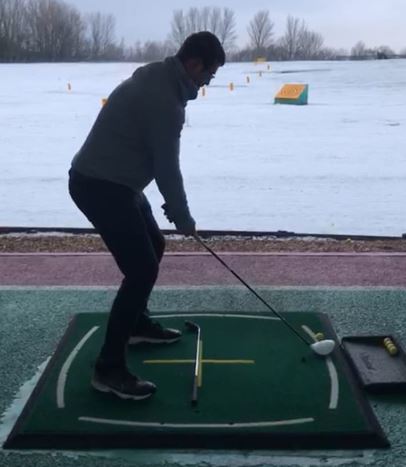Titleist 716 AP2 Irons Review – Are They Forgiving & Good for High Handicappers?
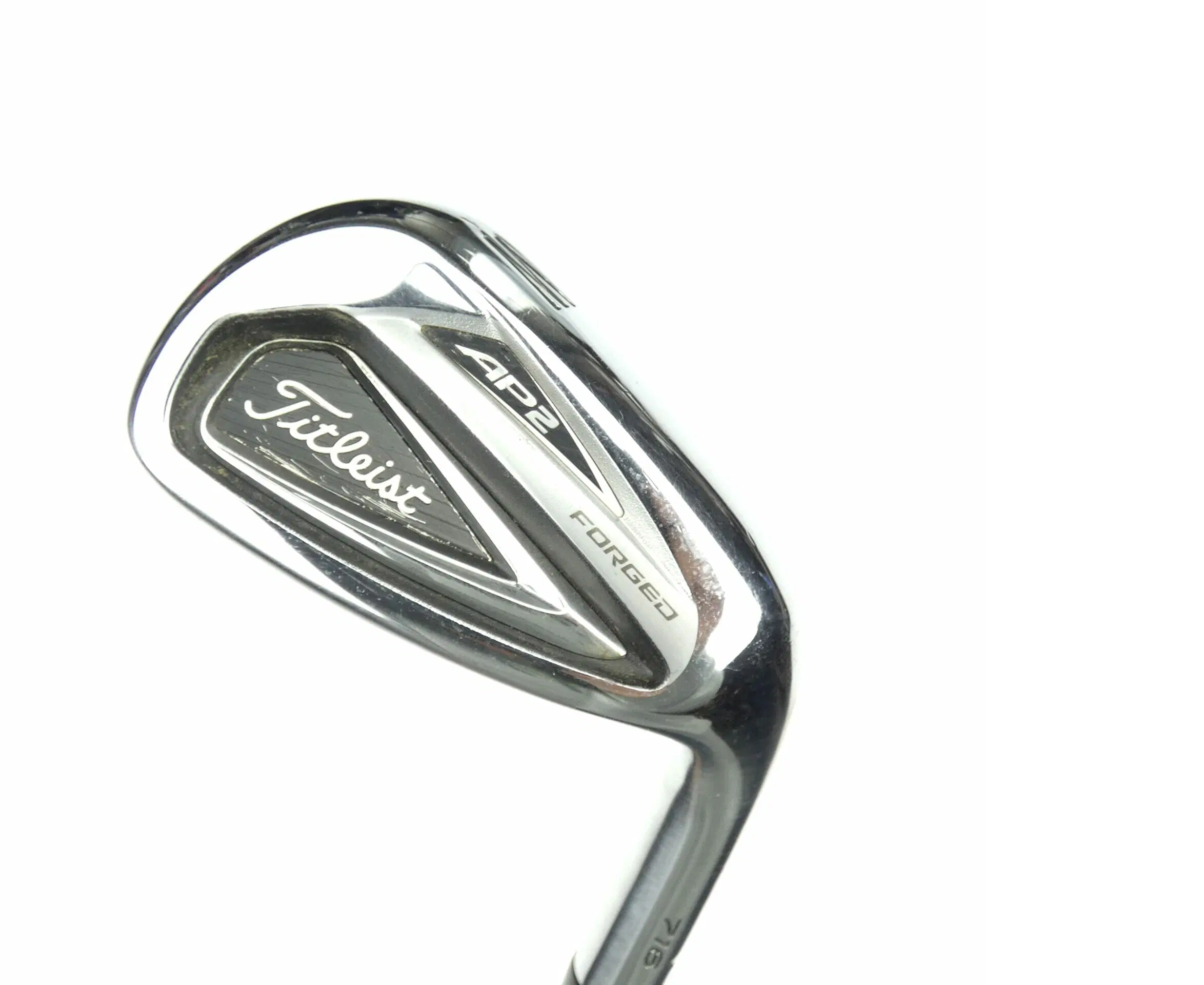
“Titleist is known as a company that sticks to traditional roots.”
They have long been perceived as a manufacturer that makes clubs mainly for better players. Over the last decade though, they have softened up a bit. There have been some solid GI iron offerings from Titlist recently. So are the Titleist 716 AP2 irons one of them? Read on to find out.
Titleist 716 AP2 Irons Overview
“The Titleist 716 AP2 irons fuse traditional game improvement features with a player’s look that I suspect many different types of golfers will enjoy.”
The design goal of the Titleist 716 AP2 irons was to produce tour-ready clubs that were more playable for average golfers. To that end, Titleist combined a moderately compact profile with features like precise tungsten weighting in the heel and toe. When I tested the Titleist 716 AP2 irons, my field notes were all over the place.
I wrote down phrases like, “easy to frame” “seems like there’s no twisting” “nice cuts” “clean lines” and “updated cavity?” It would seem from my notes alone that the Titleist 716 AP2 irons do a bit of everything: they appear to be workable, forgiving and have a nice look at address. And all of these things are true. But perhaps what I liked most about the Titleist 716 AP2s was their consistency.
In true Titleist fashion, these irons have been made to be very consistent – and this extends to mis-hits as well. As long as I wasn’t hitting hosel rockets, my ball stayed straight and didn’t lose much speed.
Still, there was a clear difference in feel and sound from when I hit face-center and when I missed the sweet spot. This is probably what I meant when I scrawled “easy to frame” in my field notebook. On center strikes, the Titleist 716 AP2 irons give off a low-frequency click and feel really soft. On mis-hits, the click turns into a metallic “ding” that feels noticeably harsher.
The natural launch of these irons is mid/high. They have fairly weak lofts but can be cajoled into launching fairly low. At address, they look really clean and sleek. Despite the cavity back design, these irons definitely have a players aesthetic.
Are the Titleist 716 AP2 Irons Forgiving?
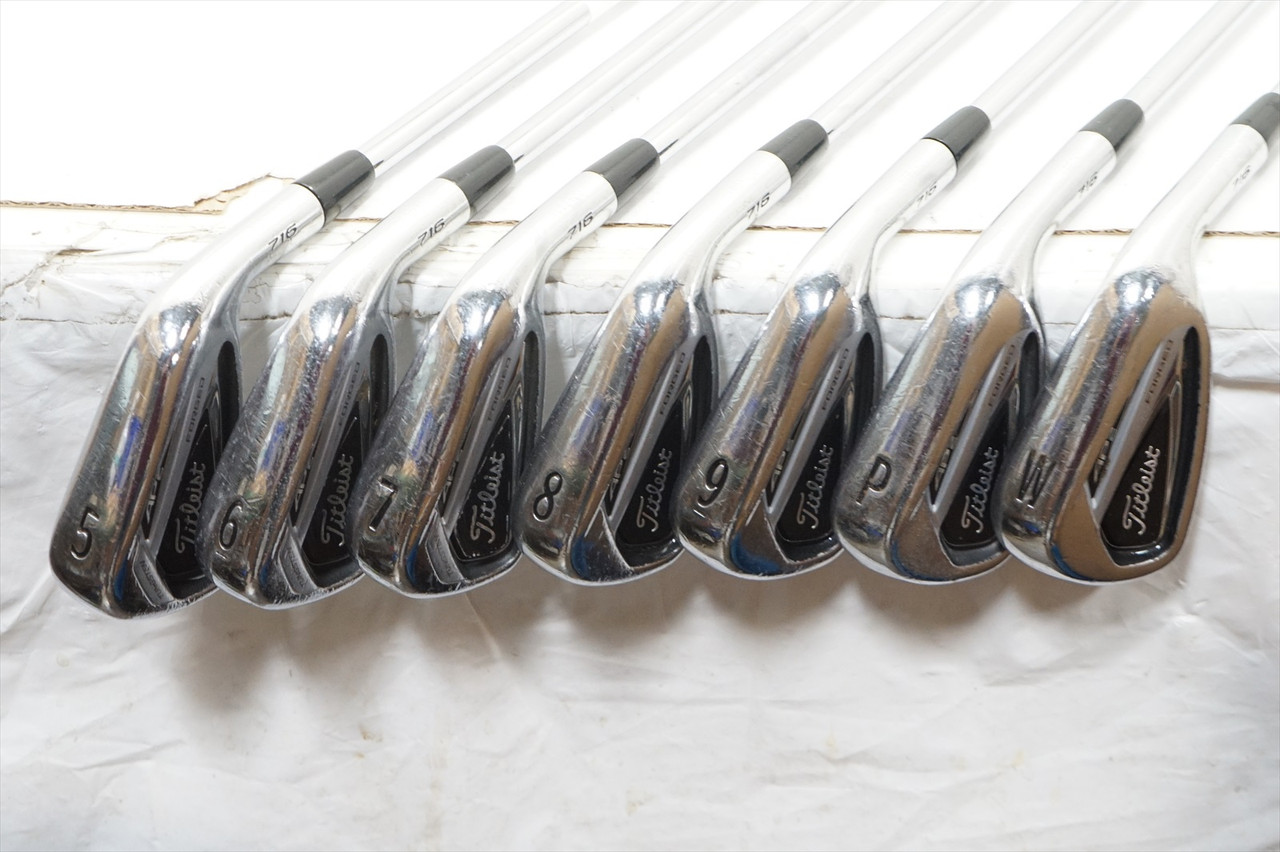
“I was surprised at how much offset the long irons had.”
The offset is progressive so it closes up as you work towards the short irons. But the long irons have visible offset which made it very easy for me to affect a baby draw. For less experienced golfers though, this offset will make it easier to affect straight flight.
The perimeter weighting also keeps lateral mis-hits from veering off-line too much. Even on severe toe mis-hits, my divergence maxed out at 11 yards. In short, the Titleist 716 AP2 irons are forgiving enough to keep you out of the trees.
Hitting the ball thin or heavy will have expected results though. The face profile of these irons isn’t super-deep so you don’t get much help with high/low face mis-hits. But the center of gravity feels nice and low so the overall MOI is still high.
The Titleist 716 AP2 irons may not be the most forgiving irons on the market; but there is certainly more forgiveness in them than your average Titelist irons.
Are the Titleist 716 AP2 Irons Good for Beginners & High Handicappers?
“I would recommend the Titleist 716 AP2 irons for high and mid handicappers.”
Beginners need not apply. Still, the Titleist 716 AP2 irons proved themselves to be among the best game improvement irons that Titleist has ever produced. The dispersion was more than adequately tight on a variety of mis-hits. The moderate sizing of the head is also very easy to get used to if you’re a high handicapper. Furthermore, the soles of these irons are just a touch on the wide side so they provide really smooth turf interaction.
Titleist 716 AP2 Vs Titleist 718 AP2 Irons
“The Titleist 718 AP2 irons have a true forged design so the feedback is clearer and the overall feel is softer than the Titleist 716 AP2s.”
But most everything else is the same. The 718’s still have tungsten perimeter weighting. Most of the differences are in the shaping. The Titleist 718 AP2 irons have a thinner topline and thinner sole. The cavity of the 718 irons also looks a bit cleaner and has a more premium look.
Forgiveness is comparable between these two sets; but I would say the Titleist 716 AP2s narrowly edge out the 718 on the forgiveness front.
Titleist 716 AP2 Irons
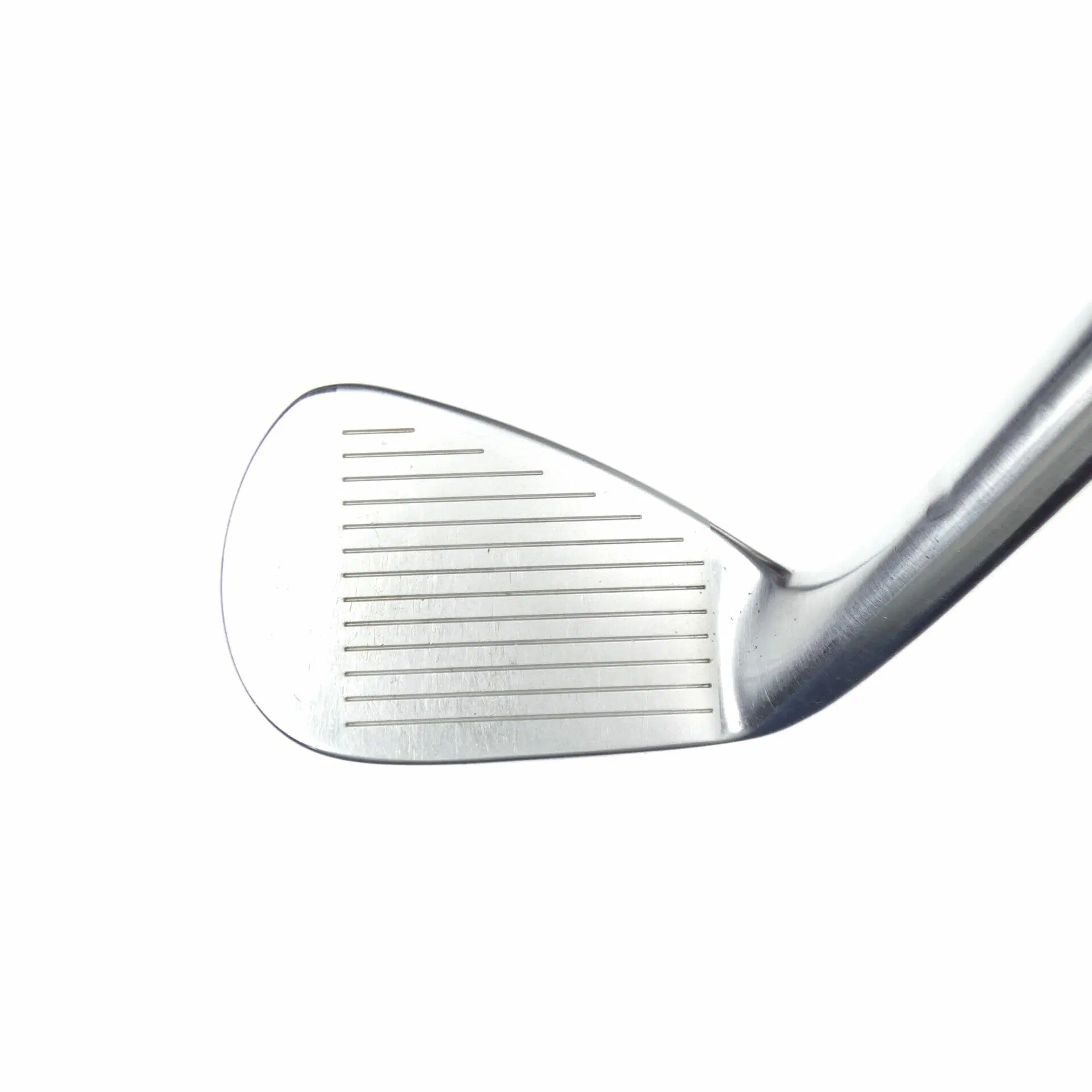
Category: Game Improvement
Titleist 716 AP2 First Impressions
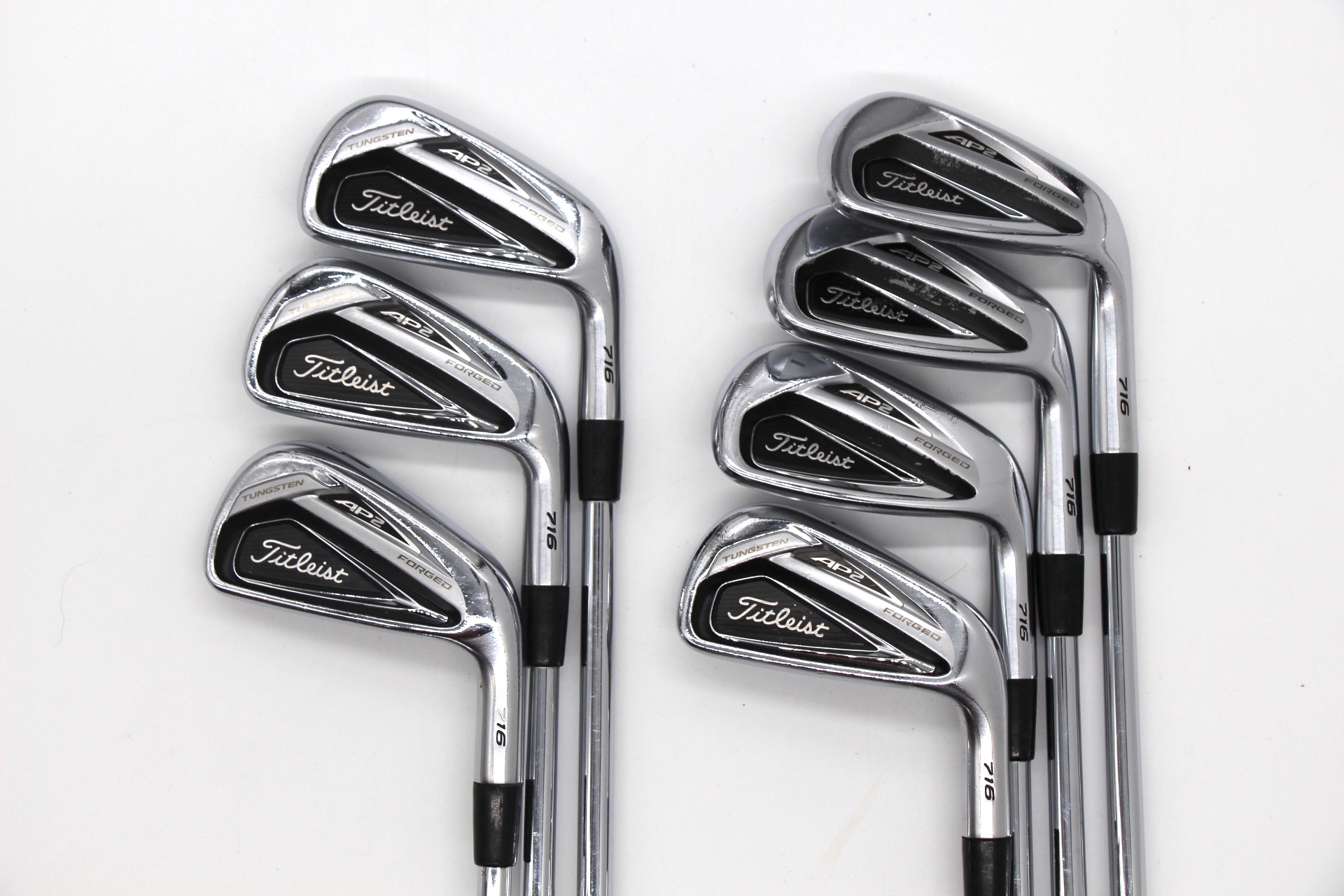
“The Titleist 716 AP2 irons have a softer feel than most cast (or “co-forged”) irons.”
But the Titleist 716 AP2 irons don’t feel overly soft so feedback is still nice and clear. Titleist did a really nice job of striking a balance between premium feel and practical feedback with these irons.
Titleist 716 AP2 Selling Points
- Tungsten perimeter weighting
- Co-forged construction
- Slightly wide soles
- Beveled trailing edge
- Mid/high trajectory
Who Are the Titleist 716 AP2 Irons for?
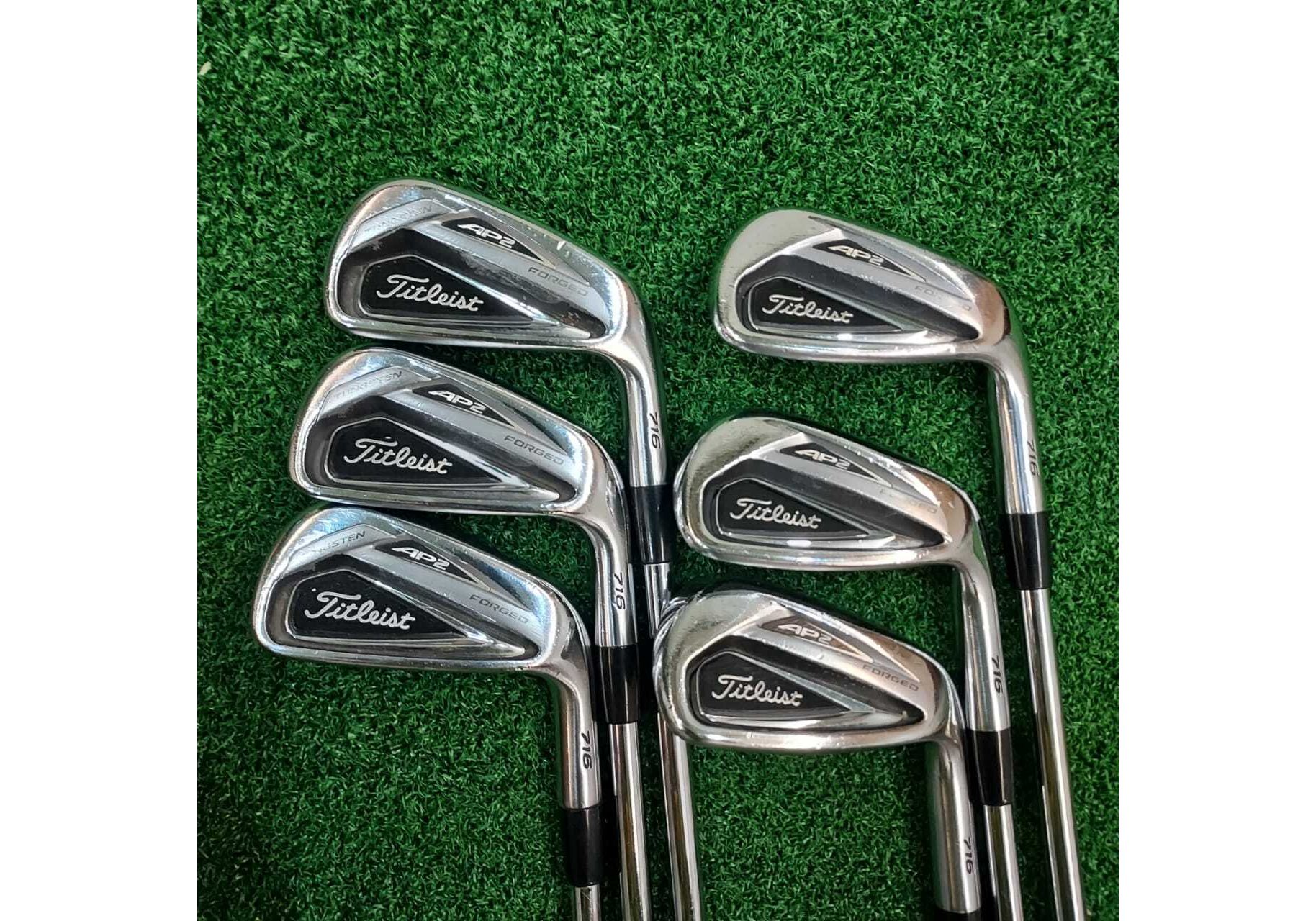
I would say the ideal handicap range for these irons would be 12-21.
The dispersion is tight which both high and mid handicappers will appreciate. The feedback is clear so as a less experienced player, you will be able to learn how you might be mis-hitting with these irons. And there is certainly enough workability in these irons for mid handicappers.
The Titleist AP Family of Irons
Included in the line of AP clubs by Titleist are the Titleist 716 AP3 irons. The AP3’s sport a hollow body design paired with an L-face insert that catches your thin shots. The Titleist 716 AP3 irons provide more distance than the Titleist 716 AP2s and comparable forgiveness. The only caveat is that the feel of the AP3s isn’t as pleasant.
Distance: 96/100
Accuracy: 97/100
Forgiveness: 96/100
Feel & Control: 97/100



